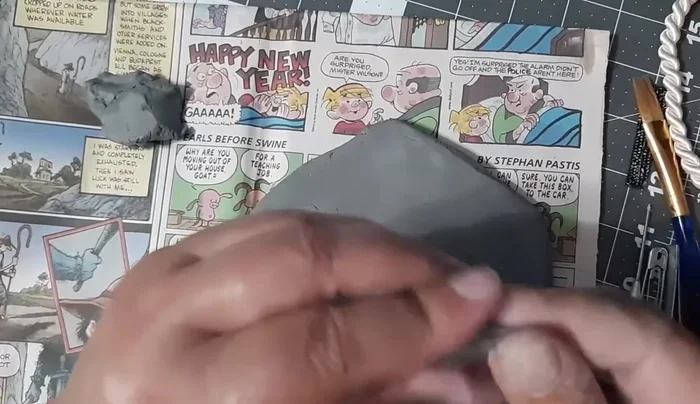Creating beautiful clay pieces is incredibly rewarding, but the final step—displaying your masterpieces—can sometimes feel like a challenge. Drilling holes for traditional hanging methods can be tricky, potentially damaging your delicate work, and the resulting wire or string can detract from the overall aesthetic. Fortunately, there's a clever solution that allows you to showcase your creations without compromising their integrity or appearance: the no-hole hanger method. This technique utilizes readily available materials to securely and elegantly hang your clay creations, enhancing their visual appeal rather than detracting from it.
This innovative method is surprisingly simple and effective, perfect for both beginners and experienced clay artists alike. Forget the frustration of uneven holes and visible hanging hardware; prepare to discover a seamless way to proudly display your artistic achievements. Ready to learn how to effortlessly hang your clay without any drilling? Let's dive into the step-by-step process.
Preparation and Safety Guidelines
- Clay
- Slip
- Tools for smoothing and shaping clay
- Sponge or soft surface (optional)
- Ensure your clay is completely dry and cured before attempting to attach a hanger. Using damp or uncured clay will cause the hanger to fail and potentially damage your artwork.
- Test the strength of your chosen adhesive and hanger method on a scrap piece of clay similar to your creation before applying it to your finished piece. This prevents damage to your artwork.
- Use appropriate safety gear, such as gloves, when working with strong adhesives. Always follow the manufacturer's instructions for the adhesive you select.
Step-by-Step Instructions
Prepare the Hanger
- Prepare a small piece of clay.
- Roll the clay into a coil.
- Shape the coil into a U-shape.
- Pinch the inside of the U-shape to create a slight overhang.




Prepare the Hanger Attach the Hanger
- Apply slip and score the back of your main clay piece.
- Attach the U-shaped hanger to the back of your piece, ensuring it connects all the way around.
- Bevel the ends of the hanger for a cleaner look.
- Ensure the overhang remains open for hanging.




Attach the Hanger
Tips
- If your piece has a lot of detail, use sponges or a soft surface to protect it.
- Smooth the back of your piece before adding the hanger.
- Sign and date your piece.
- Let the hanger dry and harden before hanging.







